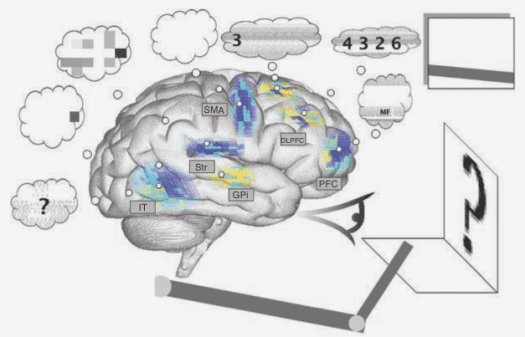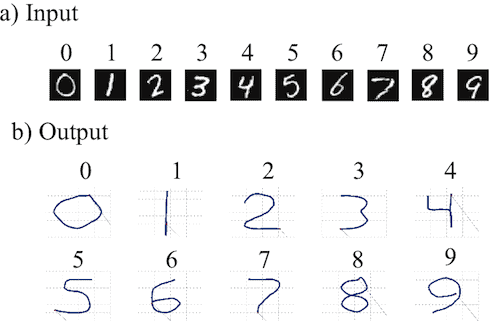
Needless to say, the human brain is the most complex neural structure encountered so far. While a computer can outwork a human in many cognitive tasks, our brain can perform a variety of tasks that no computing machine can even scratch the surface. Just think a bit about imagination – how could a computer ever come as close as generating a sole, original and uninfluenced idea by itself? By becoming a human brain. Alas, technology is decades away from achieving such a feat, but efforts are constantly being made.
A milestone in this quest for building human-like artificial intelligence has been recently reached after researchers at the University of Waterloo unveiled to the world SPAUN or Semantic Pointer Architecture Unified Network – the most complex and largest human brain working model ever performed.
SPAUN is not a robot, though, SPAUN is a simulation that lives inside a computer. There it resides inside a simulated world, with simulated physics matching our own. It can think, remember, see using its 28×28 (784-pixel) camera and even write by using its mechanical arm. For example, show it the number “3” and it will write its own “3”, even mimicking the style of the numeral in the process.
“It has been interesting to see the reactions people have had to Spaun. Even seasoned academics have not seen brain models that actually perform so many tasks. Models are typically small, and focus on one function,” said Mr. Eliasmith in a statement
An artificial mind stuck in an artificial world
SPAUN isn’t that smart, though. In many respects, it’s actually less intelligent than a monkey, who can do more general recognition than what this model does, Eliasmith said.
“It’s not as smart as monkeys when it comes to categorization, but it’s actually smarter than monkeys when it comes to recognizing syntactic patterns, structured patterns in the input, that monkeys won’t recognize,” Eliasmith said.
Ask a monkey to fill in the blank in a pattern like 1, 11, 111; 3, 33, 333; 4, 44, _____ and it won’t be able to perform. SPAUN, however, can figure this out, showcasing a hallmark of intelligence.

SPAUN has 2.5 million artificial neurons that are broken down into a bunch of simulated cranial subsystems, including the prefrontal cortex, basal ganglia, and thalamus. Neurons are the individual building blocks that make up the brain, and these cells communicate by changing their voltages. The pattern of these voltage “spikes” is what transmits information from cell to cell, and SPAUN’s brain works fairly in the same manner. The typical human brain however has 100 billion neurons – not quite close, and it kinda shows.
For instance, SPAUN isn’t able to perform tasks in real-time. Every second in the demonstration video from below equates to 2.5 hours of processing time.
Now you’ve most likely heard about computer models of neurons, but what makes SPAUN special is that its neurons actually interpret the patterns of the signals they’re firing. This is an important distinction from computing-monsters like IBM’s Watson or brain simulations that use mathematical abstractization. You may think your iPhone’s Siri app is smarter than SPAUN, and in some respects it is, but they way it works has absolutely nothing in common with the human brain.
“The reason that the Spaun model is so compelling, is that it brings all of this work together,” Mr. Eliasmith said. “Human cognition isn’t interesting because we can recognize visual patterns […] move our arms in an integrated way […] solve a particular task or puzzle. It’s interesting because we can do all of this with the same brain, in any order, and at any time.”
If SPAUN is to become more human brain-like, it should need to learn new tasks by itself, and … make mistakes. The researchers are working on exactly this, that is to say they’re developing a way for SPAUN’s neurons to be capable of adaptive plasticity or the ability to rewire neurons when performing tasks, essentially learning by doing. Currently SPAUN is only capable of performing pre-programmed tasks.
At the forefront of engineering, computer science, biology, philosophy, psychology and statistics SPAUN is a most impressive system, indeed and most useful one as well. By looking on how SPAUN performs simple tasks, neuroscientists can better zoom in on the process that underlay them and better understand how the human brain evolved to its current complexity. It is also capable of offering insight on how the brain deals with problems such as stroke or Alzheimer’s.
“There are not only deep philosophical questions you can approach using this work — such as how the mind represents the world – but there are also very practical questions you can address about the diseased brain,” Mr. Eliasmith noted. “I believe that critical innovations are going to come from basic research like this. I can’t predict what specific industry or company is going to use this work or how — but I can list a lot that might.”
Will we ever witness a self-aware, dare I say conscious, artificial entity during our lifetimes? Eliasmith isn’t sure, since him and his team are still “miles away”, according to the scientist, but this is what they’re working on.
Findings were published in the journal Science.
[via PopSci]


